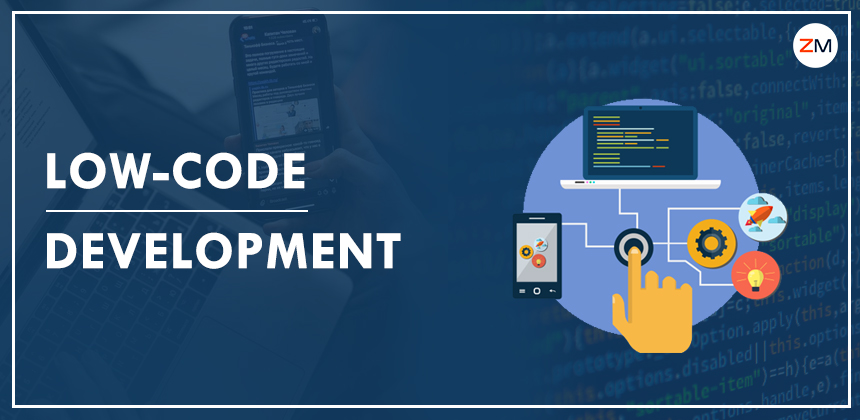Gone are the days when IT teams had to rely on cumbersome software development methods and time-consuming manual coding to create efficient and modern applications. With increasing demands from customers and end-users for innovative solutions, coupled with a shortage of developers, the software industry has had to explore new approaches to deliver their products and remain competitive in the digital landscape. One such solution is the use of low-code development platforms, which enable the industry to overcome these challenges and deliver products efficiently.
Let’s discuss more details about Low-code development!
Low-code development is a software development approach that enables users to create applications with minimal or no manual coding. Low-code platforms use visual interfaces and drag-and-drop tools to allow even non-technical users to create applications quickly and easily.
With low-code development, users can create applications by using pre-built components and visual elements that can be customized and configured to meet their specific needs. These components may include forms, workflow processes, user interfaces, data models, and integrations with other systems.
This development allows users to create an application by using visual interfaces and dragand-drop tools, rather than writing code from scratch. It also provide tools for testing, debugging, and deploying applications, making the development process faster and more efficient.
Benefits of Low-code development
• Rapid prototyping and development
• Increased efficiency and productivity
• Greater flexibility and scalability
• Lower development costs
• Reduced need for technical expertise
Here are some examples of popular low-code platforms and tools:
• Microsoft Power Apps: A cloud-based platform that enables users to create custom applications for web and mobile devices.
• Salesforce Lightning Platform: A low-code platform that provides tools for developing custom business applications.
• Mendix: A low-code platform that allows users to create custom applications for web and mobile devices.• OutSystems: A low-code platform that provides tools for developing custom web and mobile applications.
• Appian: A low-code platform that enables users to create custom business applications for web and mobile devices.
• Google App Maker: A low-code platform that enables users to create custom applications for web and mobile devices using Google’s cloud services.
• K2: A low-code platform that provides tools for building custom business applications and automating business processes.
The Future of Low-Code
Low-code technology is expected to have a promising future due to its increasing popularity and demand, particularly with the emergence of digital transformation initiatives across multiple industries. As more organizations recognize the value of digitalization in improving their operations, low-code technology presents a practical solution for software development teams to meet the rising demand for innovative applications.
It’s also important to note that low-code platforms are not a silver bullet solution. They have limitations, particularly when it comes to creating complex applications or integrating with legacy systems. Additionally, businesses still need some level of technical expertise to use low-code platforms effectively. However, they should be used in conjunction with traditional development methods, and businesses should carefully evaluate their needs and capabilities before adopting a low-code approach.
If you need additional help or information, feel free to contact Vhigna’s technology experts. They can offer valuable insights and guidance on how to efficiently integrate low-code solutions into your organization’s operations.




